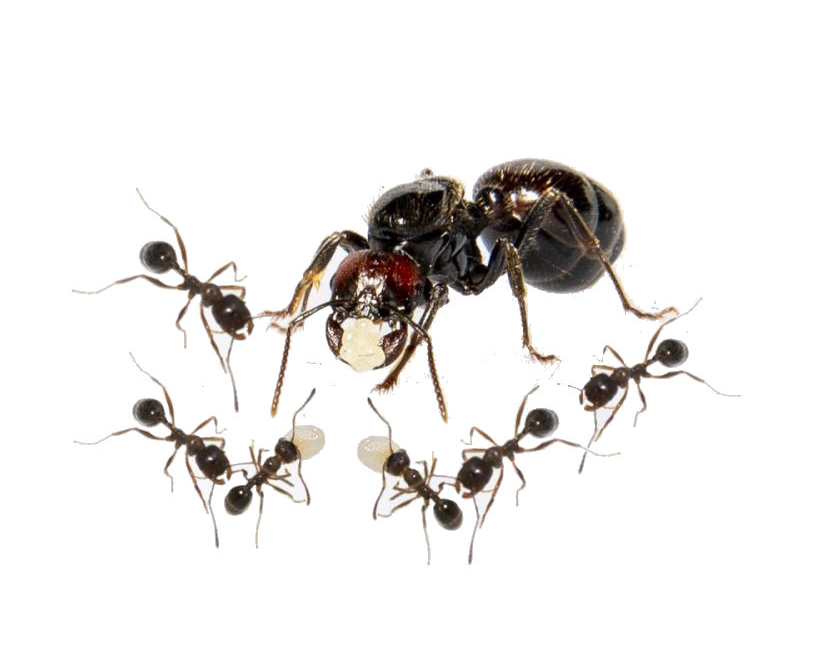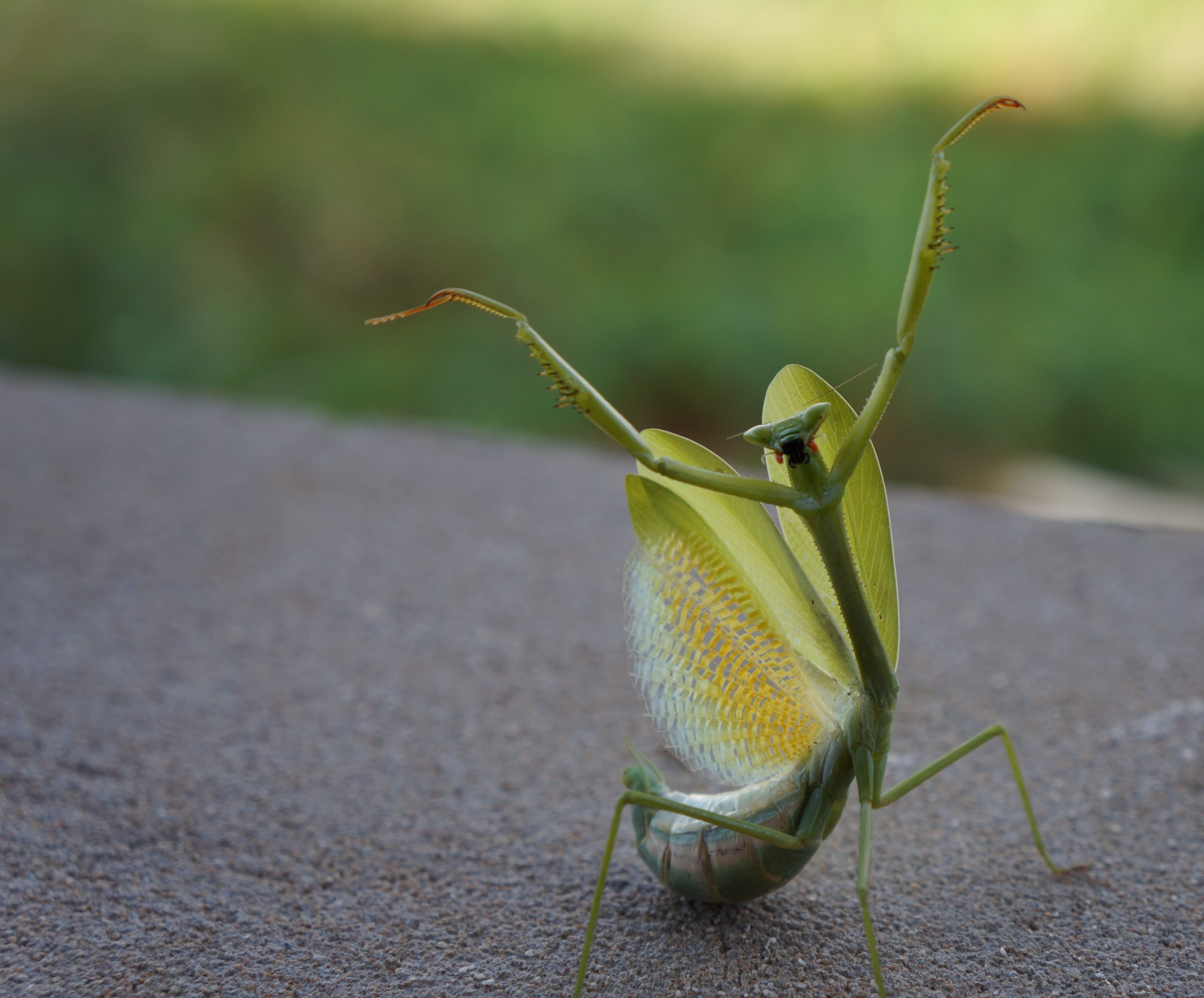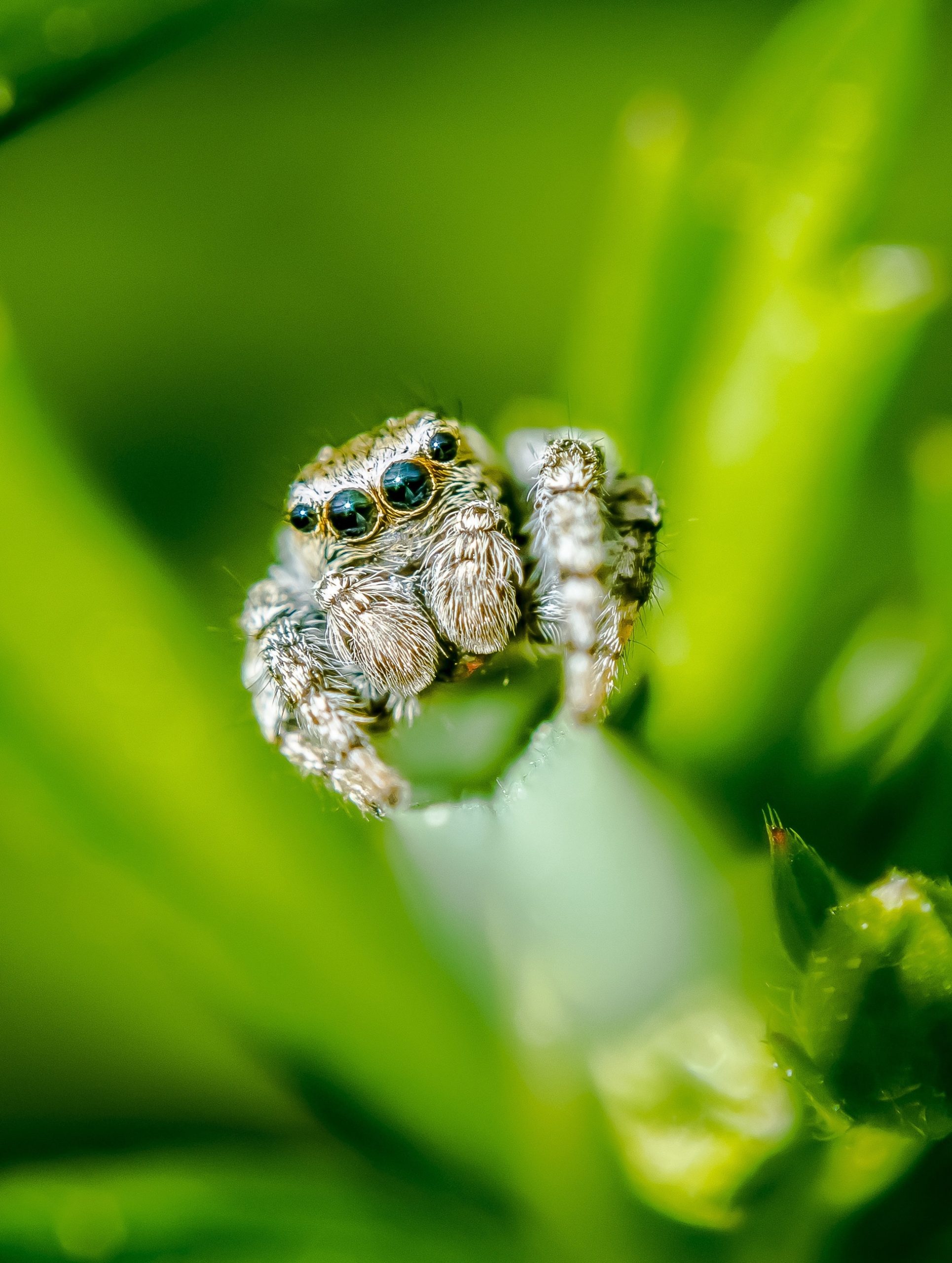
Ants

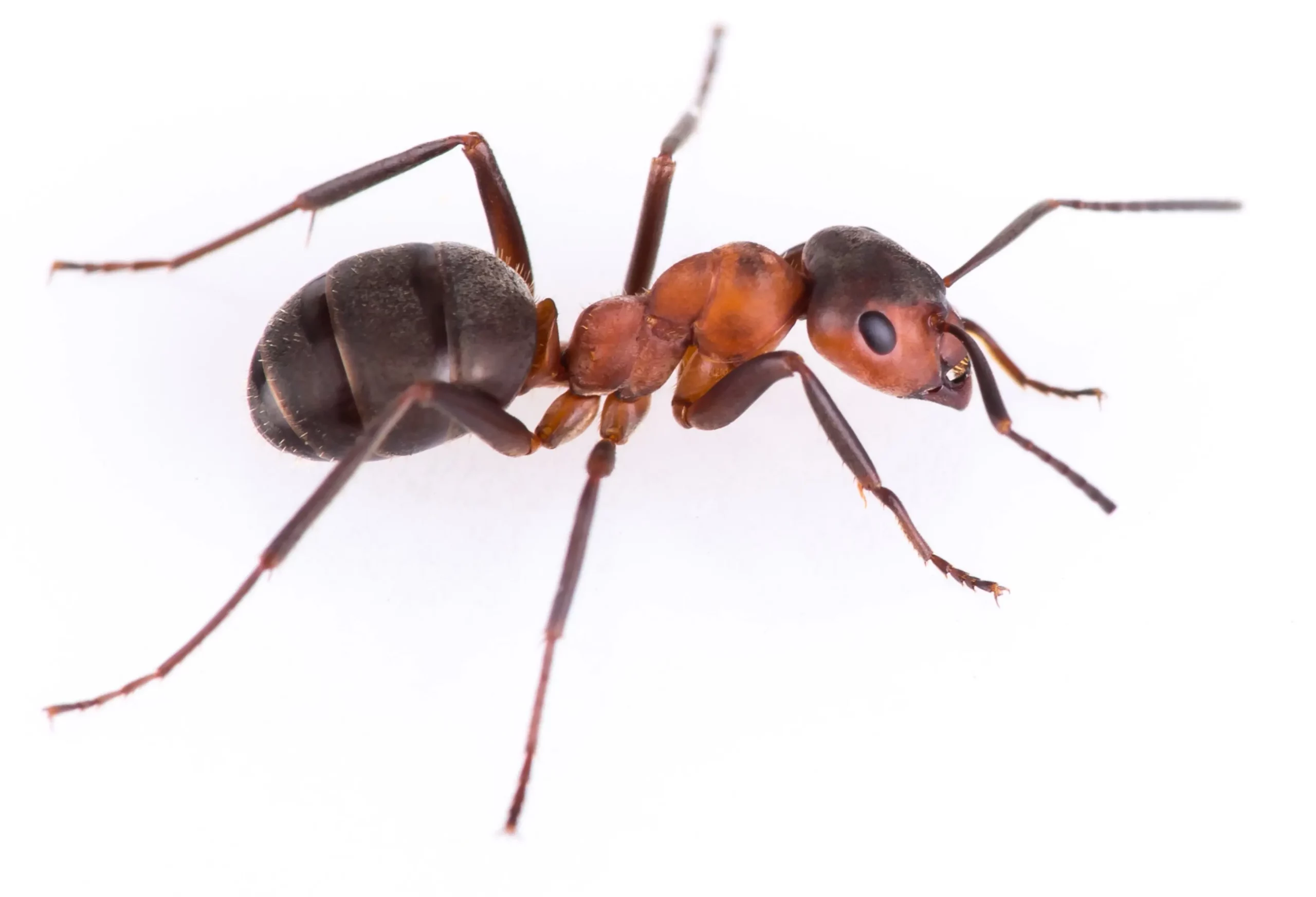
At Avonturia de Vogelkelder you will always discover an extensive choice of ants and articles for your ants! In our store we not only offer various ant species, but also an extensive range of ant items, such as ant farms, ant arenas, food gel and accessories to optimize the living environment of your ant colony. Our expert staff are ready to advise you and answer all your questions about ant care. That is why we are the place for lovers of these intriguing insects.
If you're interested in observing a fully functioning ant colony, you've come to the right place. From August 16, 2023 we have a really big ant colony in our store that you can come and meet. This offers a unique opportunity to closely study the behavior and fascinating social structures of ants.
Whether you are a hobbyist eager to start a small ant kingdom or a passionate ant connoisseur looking for a new challenge, at Avonturia de Vogelkelder you will find everything you need. Visit our store in The Hague and be enchanted by the wonderful world of ants!

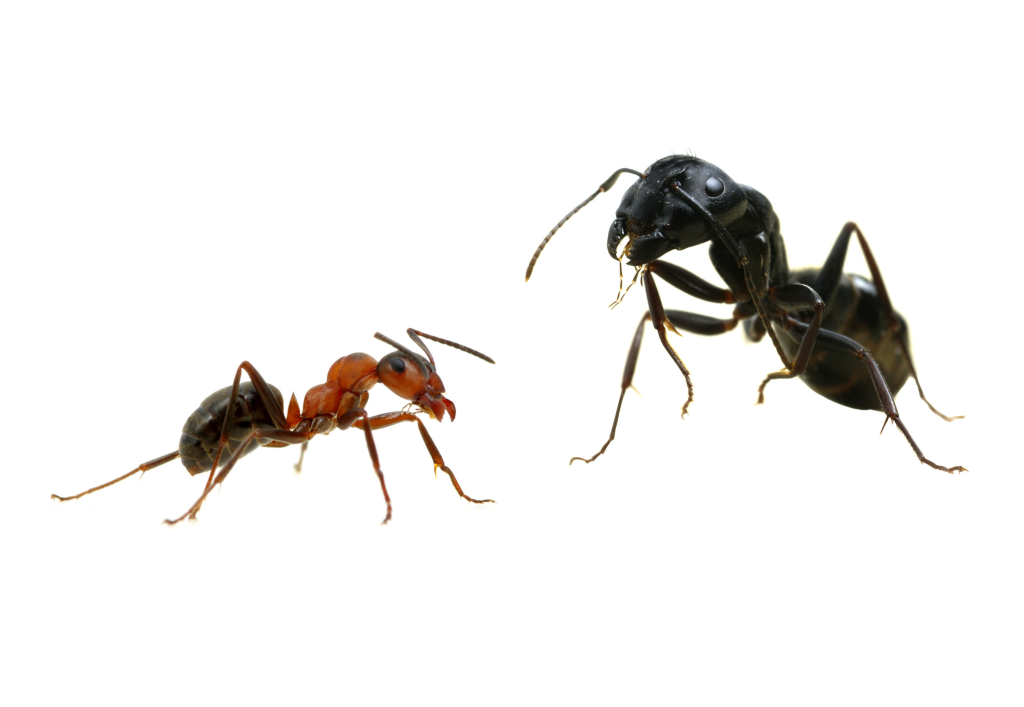
What are Ants?
Ants are social insects belonging to the family Formicidae, a large family within the order Hymenoptera. They can be found all over the world except in the most extreme environments, such as the Arctic and Antarctica. Ants play an essential role in ecosystems, having both positive and negative impacts on the environment and human activities.
Ants are extremely successful insects, in part because of their partnerships in colonies. Their ability to communicate, organize and coordinate has contributed to their widespread presence and adaptive survival strategies in different habitats.


Different types of Ants
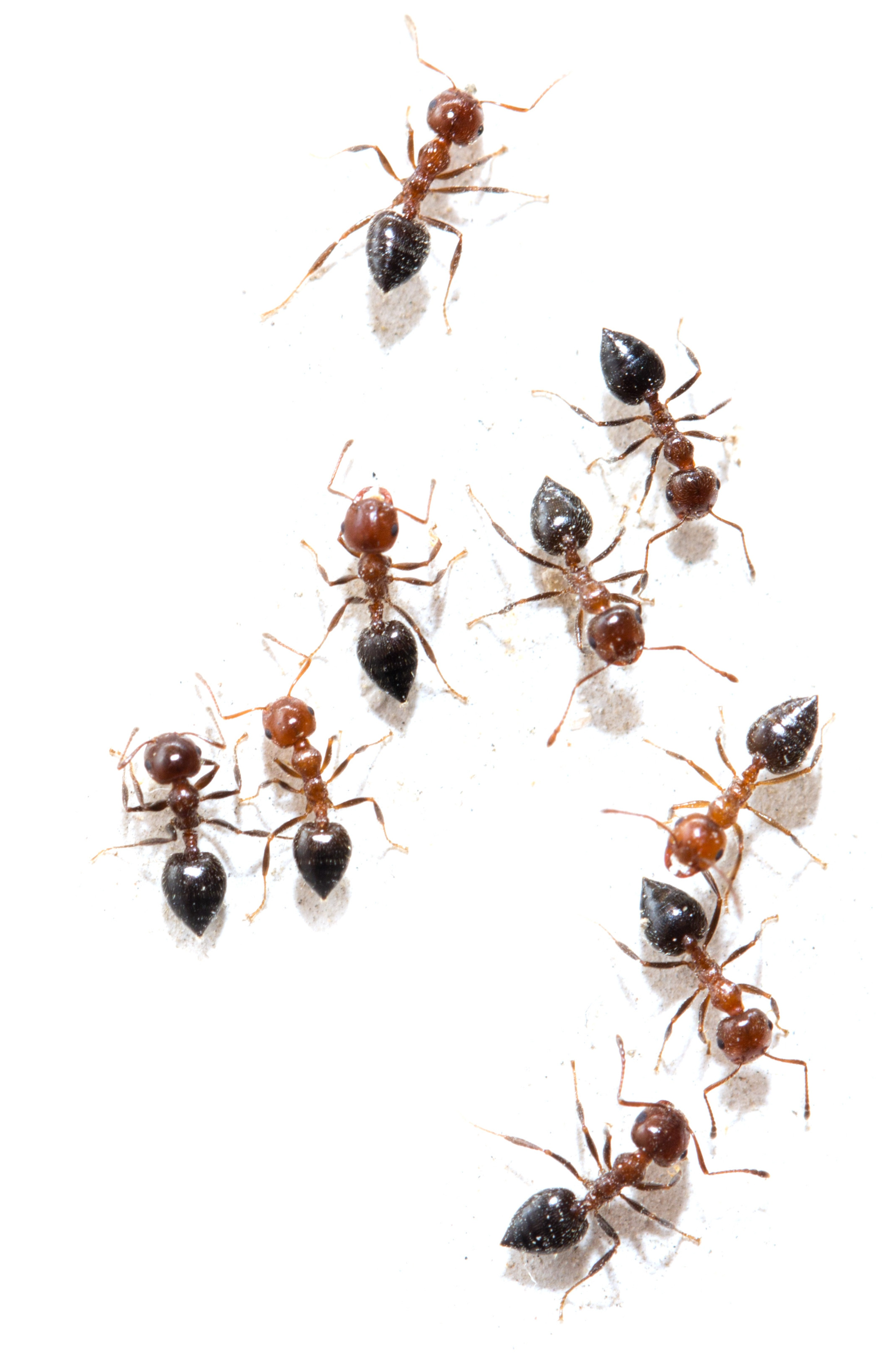
Characteristic appearance of ants
Ants have a distinctive appearance that sets them apart from other insects. In general, they have a stocky physique with a clear division between their head, thorax and abdomen.
They have six legs and two feelers (antennae) attached to their heads. The size of ants varies greatly depending on the species, with some being only a few millimeters in length while others can reach several centimeters.
The color of ants can vary from black, brown, red to yellow, depending on the species. They usually have large, compound eyes that give them good eyesight. In addition, they often have a pair of small eyes, known as "ocelli", between the compound eyes.
Their body is covered with a tough exoskeleton that protects and supports them. The unique appearance of ants reflects their adaptations to different habitats and plays a vital role in their remarkable survival as one of the most successful insect species on Earth.



Keeping ants as pets
Keeping ants as pets can be an interesting and educational hobby, but it requires careful planning and attention to ensure that the ants can live in a suitable and healthy environment. Here are some steps and considerations for keeping ants as pets:
- Research and education: Before adopting ants as pets, it is important to educate yourself thoroughly about the species of ants you want to keep. Learn about their behavior, nutritional requirements, habitats and reproductive cycle.
- Choose a suitable ant species: Not all ant species are suitable for keeping as pets. Some strains have specific requirements and may not be suitable for beginners. Start with an easier-care species, such as Lasius niger (black road ant) or the Messor barbarus (harvest ant)
- Choose an ant habitat: Ants need a suitable nest to live in. Fortunately, there are specially designed ant houses, in different sizes that can also be expanded modularly. Make sure the habitat provides enough space for the ant colony to move and grow.
- Escape Prevention: Always choose a special ant habitat as mentioned above to ensure that you have a safe and enclosed environment for your ants. Make sure the ant enclosure is properly sealed. Ants can be very small and escape routes can be difficult to detect.
- Nutrition: Because ants are truly omnivores, they have a diverse diet consisting of both plant and animal matter. As pets, feed your ants a diverse diet consisting of fruit flies, honeydew, sugar water, seeds, and fruit cups.
- Keep an eye on the temperature: To maintain the right temperature for your ant species, you can use a heat mat under your ant habitat. Make sure you also keep a close eye on the temperature with a thermometer. To measure is to know and then you can take measures if necessary.
- Correct humidity: The desired humidity depends on the ant species you keep, on average this is around 60%.
- Maintenance: Ants as pets need little maintenance, because these hard workers keep their environment clean themselves.
- Patience and observation: Keeping ants as pets requires patience and close observation. Take the time to study and understand the behavior of the ants. It is also nice to see how your ant colony will gradually grow.
- Attention to the Queen: The queen is the heart of your colony and her well-being is essential to the survival of your ant colony. Make sure she has plenty of rest and access to plenty of food.


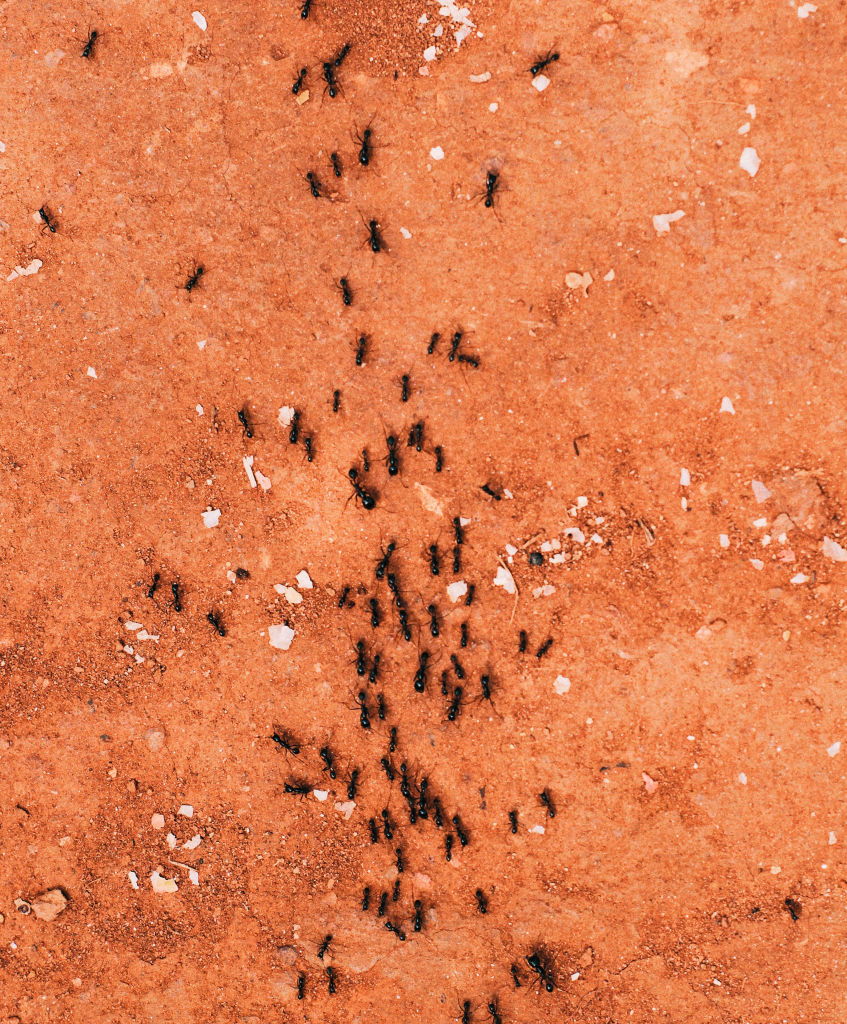
Social Structures
The unique social structures of ants are a prominent feature of these fascinating insects. Ants live in organized colonies with a complex hierarchy and division of labor. The colony consists of several castes, each with a specific role and responsibilities.
The cooperation and coordination between different castes within the colony are essential to the functioning and success of the entire community. These advanced social structures have contributed to the success of ants as one of the most successful insect species on Earth, adapting and thriving in a variety of habitats around the world.


Communication
Ants communicate in different ways as they are social insects that live together in organized colonies. Ants communicate in different ways as they are social insects that live together in organized colonies.
Each ant species produces specific pheromones to convey various messages such as food sources, the presence of enemies, marking routes and nest recognition. Ants leave pheromones on surfaces by walking over them or rubbing their antennae.
In addition, ants use touch as a way to communicate with each other. They often touch each other with their antennae, legs or bodies to transmit information. This can be signals to share food, to determine rank within the colony or to stimulate other ants to perform a certain task.
Some ant species can sounds make to communicate through stridulation, where they rub body parts together to produce sound. These sounds can serve as warning signals or to attract other ants.
Finally, ants make use of visual signals to communicate. They use body language, such as body trembling, changing posture, or expanding the antennae, to inform other ants about specific situations.
The combination of these methods of communication allows ants to efficiently collaborate and coordinate within the colony, enabling them to perform complex tasks and organize their social structure. Ants' communication skills have contributed to their great success as social insects and make them a remarkable species in nature.


What is an ant hive?
An ant caste refers to the different specialized groups of ants within an ant colony. Ants are social insects that live in organized societies where individuals have duties and responsibilities appropriate to their particular caste. Each ant hive has its own function and contribution to the functioning of the colony as a whole. Here are the main hives in an ant colony:
Workers: Workers are infertile female ants and form the largest group in the colony. They are responsible for gathering food, caring for the brood, maintaining the nest, and other tasks necessary for the survival of the colony.
Ant queens: The queen is a fertile female ant responsible for laying eggs and producing new generations of ants. Its main task is to continue the colony by producing eggs.
Darren: Darrens are male ants whose sole purpose is to mate with young queens during the nuptial flight. They have no other specific tasks in the colony.
Soldiers: Some ant species have a separate caste of soldiers. These ants usually have enlarged jaws or other structures that help them defend the nest from enemies.
The concept of castes in ant colonies refers to the division of labor and cooperation among the ants, which plays a key role in their success as social insects. Assigning different tasks and responsibilities to specific groups within the colony allows ants to function more efficiently and adapt to their environment.


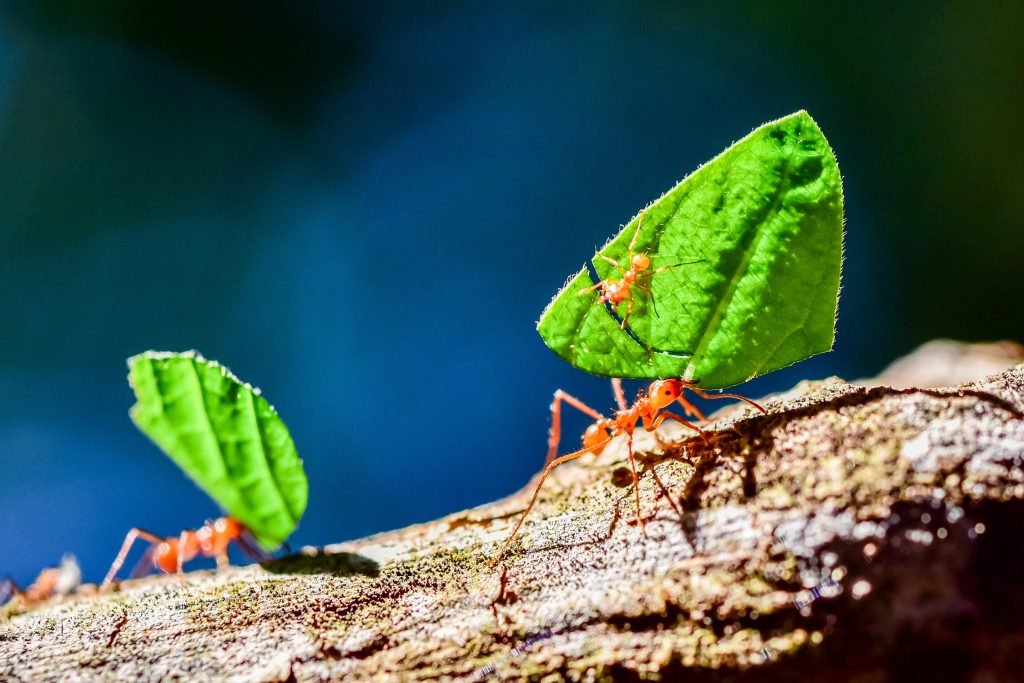
The Ant as Farmer
Ants are known for their impressive agricultural practices, with some species acting as true agriculturists. A striking example is the leafcutter ants, which have a complex symbiotic relationship with a specific species of fungus.
These ants cut pieces of leaves from various plants and carry them back to their underground nests. Once there, they use the leaves to feed a specific fungus, which they intentionally grow in special "mold chambers." The ants then feed on the fungus, which serves as a food source for them.
This agricultural practice of leafcutter ants is very sophisticated and requires a high degree of cooperation and organization within the colony. The ants must select the correct leaves, transport them to the nest and accurately administer them to the fungus. They also keep the fungus free of competing microorganisms so that their food supply is not compromised.
The farming ants have developed into highly successful species as they have come to depend on their fungus for food. This phenomenon of ants as farmers shows how complex and diverse ant behavior can be.
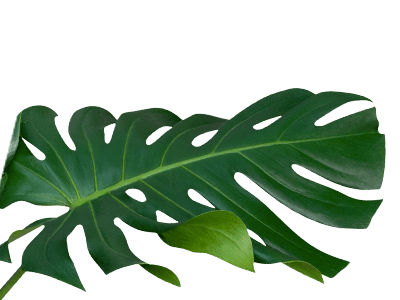


Pests and beneficial ant species
Ants are a fascinating example of how the same species can be considered both a pest and a useful one, depending on the context and the specific ant species. In general, ants are very useful insects within the ecosystem due to their diverse functions and contributions to nature. They are plant pollinators, help improve soil quality and act as natural pest controllers by reducing harmful insect infestations.
Useful Ants:
As for their beneficial role, ants play an important role in the pollination of flowers. They visit flowers in search of nectar and inadvertently spread pollen, allowing plants to reproduce. In addition, ants contribute to soil health by churning and aerating the soil while digging their nests.
This promotes water infiltration and the spread of organic matter, which is beneficial for plant growth and soil life. In addition, some ant species are active predators of insect pests that can harm crops or gardens, aiding in natural pest control.
Ants as a pest:
On the other hand, certain ant species can be considered pests in human environments. They can invade and contaminate food supplies, especially when attracted to sweet foods such as sugar or honey. In gardens, some ant species can become a nuisance by eating plant seeds or roots, which can stunt the growth of certain plants.
In addition, some ants can build nests in buildings or homes, which can lead to structural damage, especially if they attack woody materials.
It is important to understand that not all ant pests are the same species and that many ants are very useful in their natural environment. Ants are an essential part of the ecosystem and contribute to the biodiversity and balance of their environment.
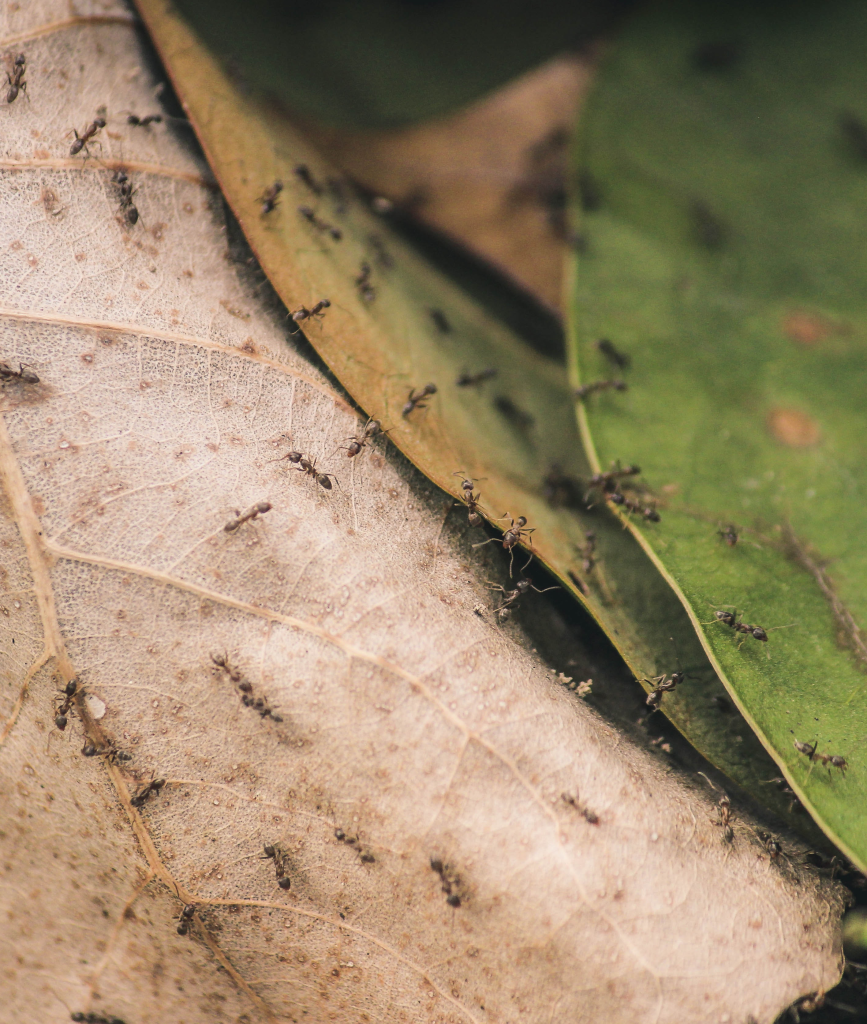
What Do Ants Eat
The diet of ants can vary depending on the ant species and the availability of food in their environment. In general, ants are omnivores and have a diverse menu consisting of both plant and animal matter. Here are some of the main foods ants eat:
Sugars and carbohydrates: Ants love sugars and carbohydrates. They feed on honeydew, a sweet liquid produced by aphids and other insects. Ants often milk these insects by stroking their abdomens to obtain honeydew. They can also find sugary substances in fruits, nectar and even sugary food left behind by humans.
Protein: Protein-rich food is essential for the growth and development of the brood and for the nutrition of the queen. Ants collect protein sources such as dead insects, small arthropods, and other organic matter.
Seeds: Some ant species eat seeds as part of their diet. They can collect and store seeds in their nests as a food supply.
To leaf through: Leaf-cutter ants specialize in cutting leaves from plants, which they then carry to their nests. These leaves are not eaten directly, but serve as a food source for a fungus that is grown in the nest. The ants consume the fungus as food.
Dead plants and animals: Ants play an important role as cleaners in ecosystems. They feed on dead plants, animals and other organic matter, helping to break down and recycle organic matter.
The food that ants collect is often returned to the nest, where it is distributed among the colony members. Ants are very efficient foragers and communicate with each other through pheromones to mark food sources and direct their colony mates to the correct locations.


Role in the Ecosystem
Ants play a vital role in ecosystems and have a significant impact on the environment in which they live. They fulfill several important functions within the ecosystem. Ants are important cleaners in ecosystems. They feed on dead plants and animals, helping to break down and recycle organic matter. In addition, ants often serve as food for other animals, such as insectivorous birds and mammals.
Cleaners: Ants play an important role as cleaners. They feed on dead plants, animals and other organic matter. By breaking down and recycling organic matter, ants help release nutrients and minerals, returning them to the soil and making them available to other organisms in the ecosystem.
Soil improvers: Through their digging activities, ants help aerate the soil and promote water infiltration. This helps improve soil structure and promotes healthy microbial life in the soil.
Seed dispersers: Some ant species aid in seed dispersal. They collect seeds and carry them back to their nests, where they can germinate and grow new plants. This contributes to the diversity and restoration of plant communities in the ecosystem.
Predators and prey: Ants are both predators and prey in the ecosystem. They prey on small insects and arthropods for food, which helps control infestations. At the same time, they are an important source of food for other animals, such as birds, reptiles and mammals.
Soil Disturbers: While ants are useful for soil structure, some species can also be disruptive. They can eat plant seeds and damage roots, which can affect vegetation in certain areas.
All in all, ants contribute significantly to the health and balance of ecosystems. Their activities affect biodiversity, soil quality and regulation of populations of other organisms. They are an integral part of the ecosystem and their presence has far-reaching consequences for the natural environment in which they live.

Reproduction
Ant reproduction is a fascinating and complex process that is essential for the survival of the colony.
- Bridal Flight: Reproduction in ants begins with an event known as the "bridal flight." This occurs when an established ant colony (usually in spring or summer) has produced male ants (drones) and young, new queens. These new ants have wings and leave the nest to disperse and mate.
- Mating: During the nuptial flight, the young queens search for other colonies of the same species to meet males. When a queen encounters a male, they mate in the air. After mating, the queen looks for a nice place to start her own colony.
- Foundation of a new colony: After mating, the fertilized queen looks for a suitable nest site to establish her new colony. This can vary depending on the ant species, but it could be an underground burrow, a crevice in rocks, a hollow tree trunk, etc. The queen sometimes digs a starting chamber herself to lay her eggs.
- Egg-laying and brood care: The queen begins to lay eggs in the nest's starting chamber. These eggs will develop into larvae and later pupate into adult ants. In the beginning, the queen herself takes care of the brood by feeding and caring for the larvae. Over time, as the first generation of workers hatches, they will take over the queen's duties and care for the brood. This while the queen is mainly concerned with laying eggs.
- Growth and development of the colony: As the colony grows, the number of workers will increase. This increases the efficiency of foraging, nest maintenance and brood care. The colony will gradually adapt to the environment and may persist for years, decades, or even longer, depending on the ant species and other factors.


The Ant's Nest
An ant nest is an amazing structure that serves as a home and habitat for an organized colony of ants. The nest can vary in size and complexity depending on the ant species and available environment. Usually, ant nests are built underground, but some species can also build nests in trees, rocks, or even human structures.
The construction of the nest begins with the digging activity of the workers, who use their powerful jaws and legs to dig tunnels and chambers in the ground. The nest consists of several chambers with specific functions, such as brood chambers for laying eggs and food storage chambers.
Ants also consider ventilation and moisture control in their nest. Making special corridors to allow airflow and drain water.
Building and maintaining the ant nest is a remarkable feat of cooperation and organization within the colony. Enabling ants to successfully live and thrive in diverse habitats around the world.


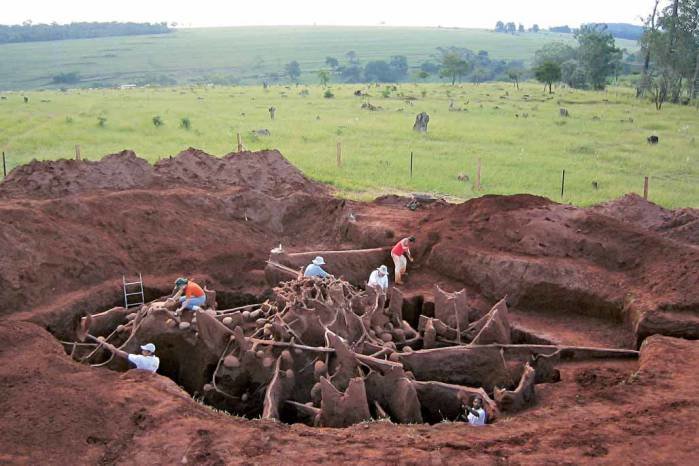
The Biggest Ant's Nest
The largest ant nest on Earth is located in the Mediterranean region. This impressive ant nest stretches over more than 6.000 km and runs from northern Italy through the south of France to the west coast of Spain.
This gigantic colony consists of millions of individuals of the Argentine ant species (Linepithema humile). What makes it remarkable is that all the ants in this supercolony are interconnected, allowing them to function as one big community despite being separated by enormous distances.
This wide dispersal is made possible by the frequent movement of ant queens and workers, which move over large areas, allowing them to establish new nests and expand existing colonies.

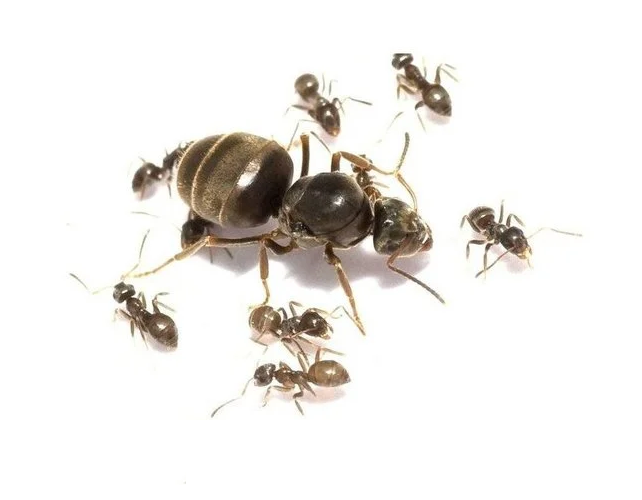
Which ant species are found in the Netherlands?
There are more than 60 different ant species in the Netherlands. These ant species can be divided into 3 main types, the forest ant, garden ant and stinging ant. Some of the common ant species in the Netherlands are:
Black road ant (Lasius niger): A small black ant often seen in gardens, parks and other green areas.
Red forest ant (Formica rufa): A large ant species with a reddish-brown color, which mainly lives in forests and heathlands.
Common garden ant (Lasius flavus): A small ant with a yellow-brown color that can often be found in gardens and lawns.
Glossy carpenter ant (Lasius fuliginosus): A dark, shiny ant found mainly in woody environments, such as forests.
Stone ant (Myrmica rubra): A reddish-brown ant that can often be found in stony areas and between pavements.
Swamp ant (Formica fusca): A dark ant species that lives in moist areas, such as swamps and peat bogs.
These are just a few examples of the many ant species that occur in the Netherlands. Each of these ant species has its own characteristics, behaviors and habitats, contributing to the diversity and abundance of ant populations in the country.



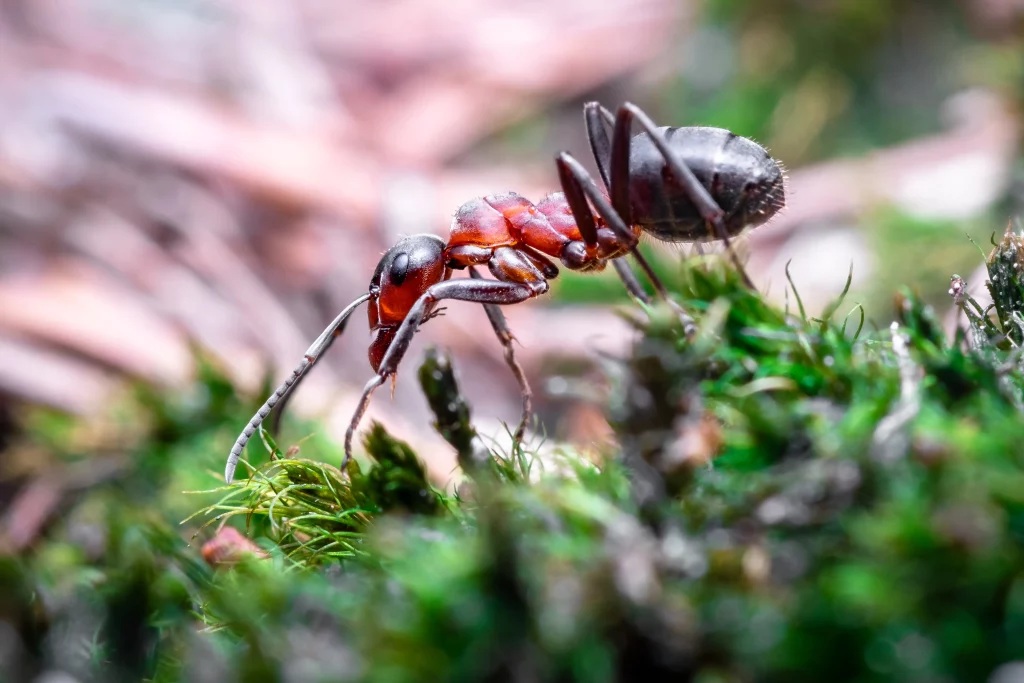
How Old Do Ants Get?
The lifespan of ants varies greatly depending on the specific caste they are in and the species of ant. In general, we can describe the lifespan of ants in the different hives as follows:
Workers: Workers are sterile female ants that do most of the work in the colony. The lifespan of workers is usually relatively short, usually ranging from a few weeks to a few months, depending on the ant species and environmental factors.
Ant queens: The queen is the fertile female ant responsible for laying eggs and producing new generations within the colony. In some cases, ant queens can live a very long time, ranging from several months to even several decades in some tropical species. There are known cases of certain ant queens living in captivity considerably longer than expected.
Ant males (drones): Ant males usually have the shortest lifespan within an ant colony. They only live for a few weeks and their main purpose is to mate with the new queens during the nuptial flight. Most drones die after mating.
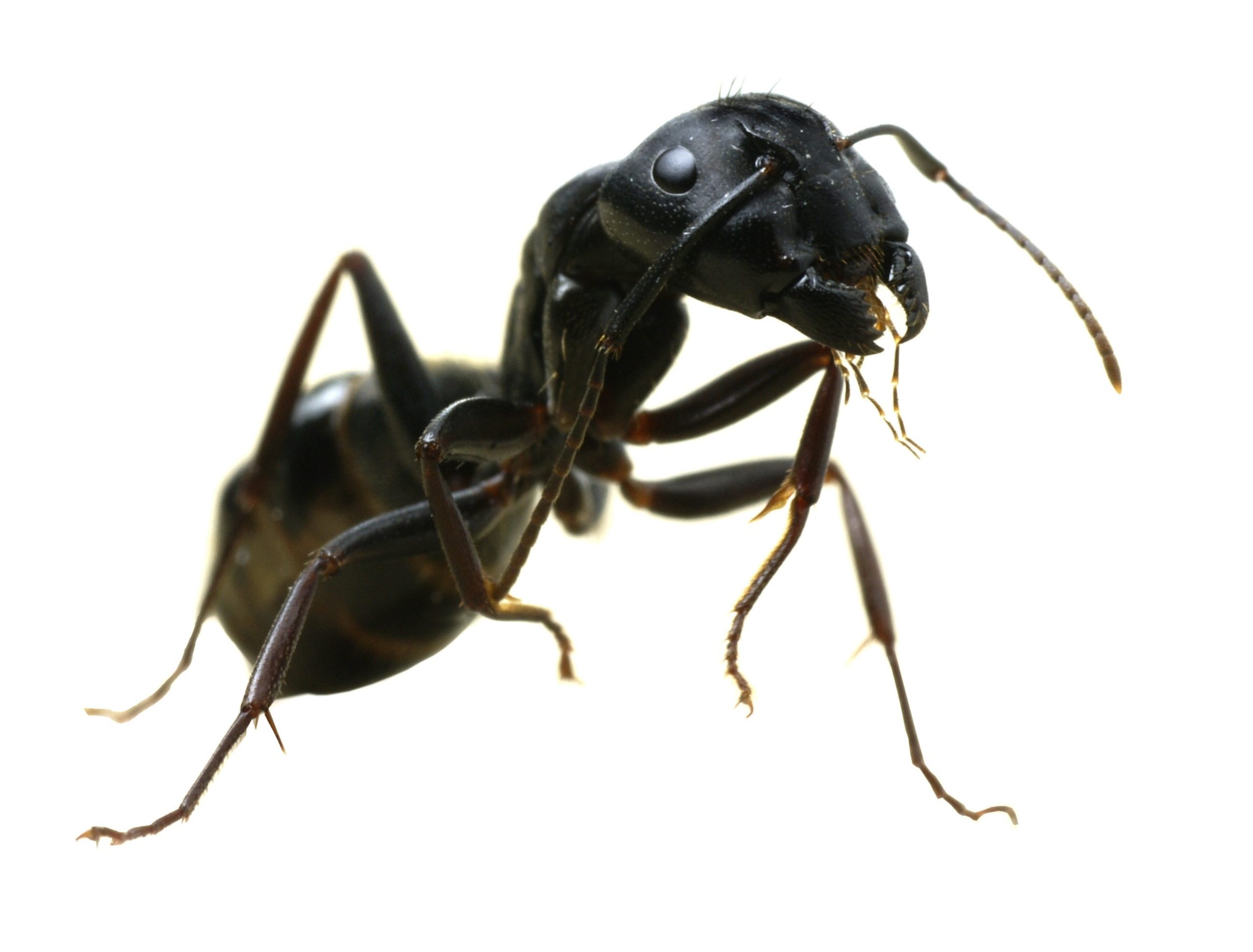
Ants and their Winter Rest
When it gets colder, ants become less active, but they remain active in their nests and continue to be able to move and function, albeit at a slower rate than during warmer months.
To survive the cold temperatures, ants will retreat deeper into their nests, where the temperature is more stable and better protected from the elements. They can also use their collective heat to protect the colony.
However, some ant species are seasonal, meaning they reduce their activity or even temporarily leave their nests during the colder winter months. They may experience some kind of dormancy, but this is not considered a true hibernation, as in some other animals.
In the spring, when temperatures rise, ants become more active again and begin gathering food, caring for the brood, and expanding their colonies. They have a remarkable ability to adapt to changes in weather and remain active and thrive through different seasons.



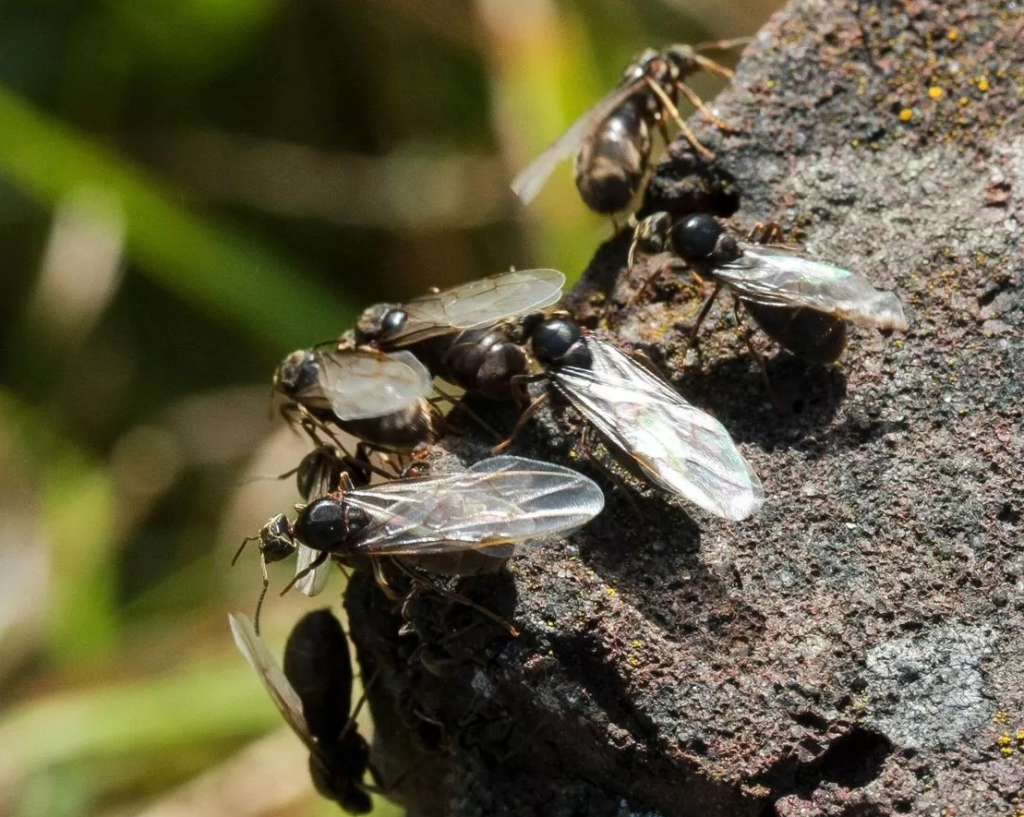
What are Flying Ants?
Flying ants are not a separate species of ants, but refer to the reproductive stage of ant colonies.
Flying ants are the fertile young queens and males of an ant colony with wings that fledge from their original colony to mate and establish new colonies. This event is known as the "bridal flight."
The male ants are responsible for fertilizing the queens. After the nuptial flight, the male ants lose their wings and usually die quickly.
The fertilized queens will look for a suitable place to start a new nest. Once they find a suitable location, they shed their wings and start building a new nest. Then they lay eggs, starting the new colony.
Everything for you Ants


